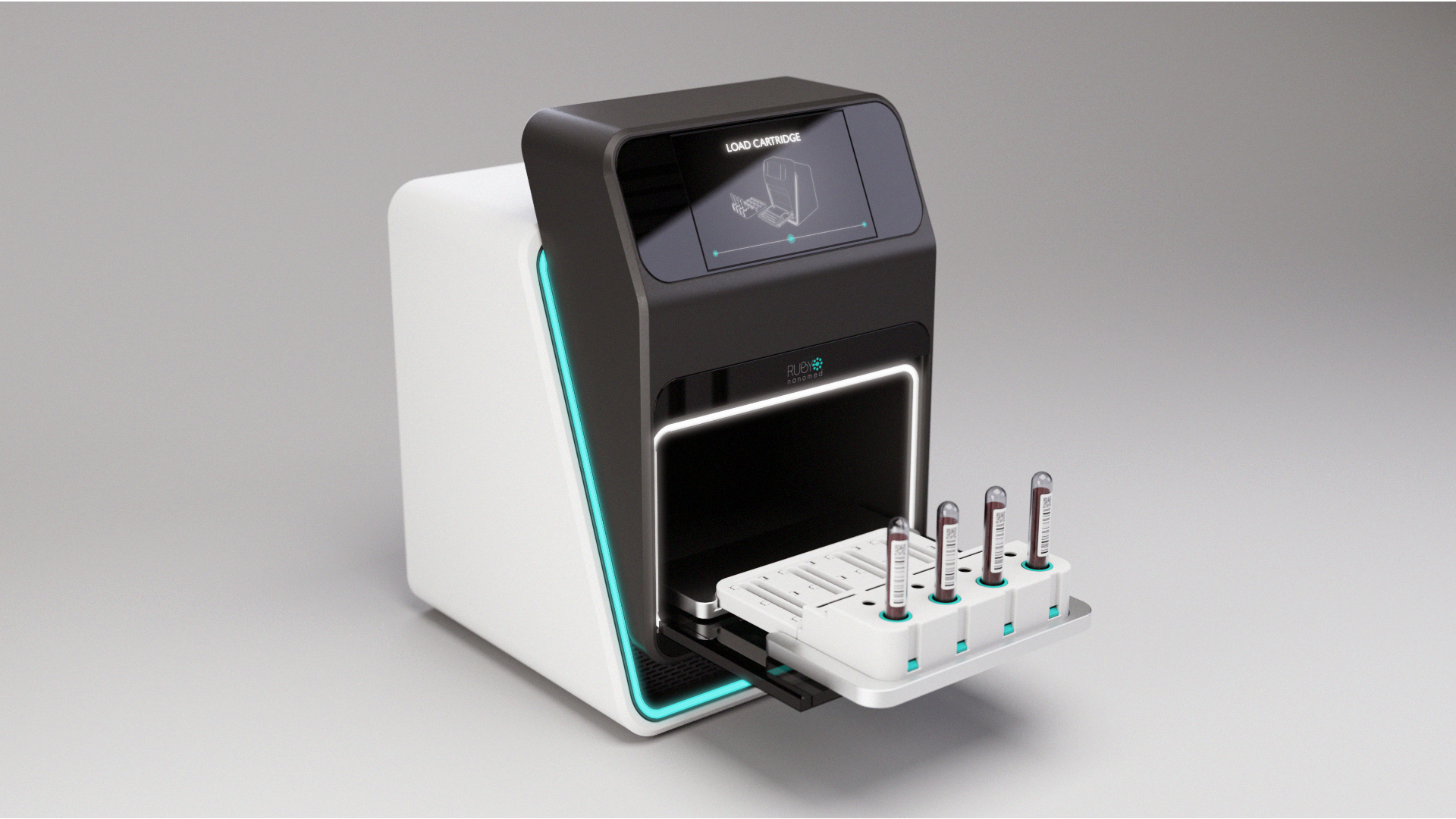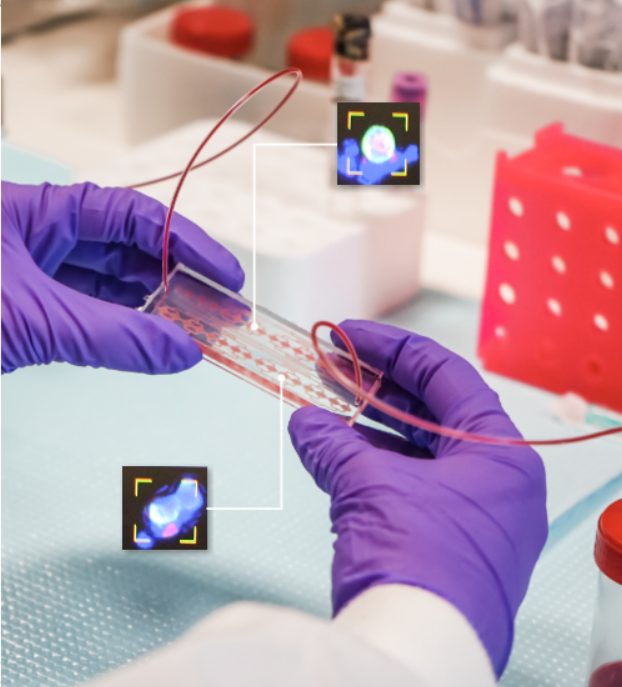
Project Bright: Liquid Biopsy System
Client: Ruby Nanomed
Project Type: Diagnostic Capital Device, Disposable Cartridge Design
My Role: Lead Industrial Designer, Design Engineer
Duration: 19 Months
Individual Contributions:
Industrial design and visual brand language development
Capital and cartridge technical concept generation and architecture development
Design Engineering of two prototype enclosures for looks-like-works-like prototypes with integrated display (Raspberry Pi backend)
Capital and cartridge renderings and medical renderings for concept communication
Animated product commercial used to communicate concept to investors and Key Opinion Leaders in demos and presentations
VR Experience with interactable capital and cartridge system in simulated lab environment
Lifechanging Cancer-Monitoring Technology
By monitoring metastasis through isolation and imaging of Circulating Tumor Cells (CTCs) Ruby Nanomed’s breakthrough liquid biopsy technology would provide a vital advantage in the treatment of cancer patients, empowering oncologists to provide bespoke treatment and react to disease progression in real time.
In order to scale their technology up and unlock greater adoption and impact in clinical pathology labs, the Veranex team designed a fully-automated capitol and cartridge based system.
Circulating Tumor Cells (CTCs) are cells that have shed from a primary tumor and are swept away by the circulatory or lymphatic systems, traveling through the body and forming tumors in other viable tissue and organs.
Isolating or enriching CTCs is challenging due to their low concentration in the massive pool of circulating blood cells (about 1 in 10 billion cells) and physical properties that make them difficult to capture mechanically.
Ruby Nanomed’s chip technology solves these problems, trapping CTCs and selectively staining them using specific antibodies, allowing them to be imaged and analyzed special equipment.
Overcoming Technical Challenges
Ruby Nanomed’s technology initially required a multi-hour manual process and a highly trained lab technician to isolate and stain CTCs from blood samples.
Through a user research study conducted by the Veranex team on site in the EU, we gained higher clarity on competitive devices, the use environment, and the challenges that would need to be solved in order to scale their technology up and unlock widespread adoption.
Automation and Throughput: Replace hand-dosed reagents, complicated setup steps and multiple disposable components with a single cartridge and fully automated processing unit that could provide high sample through-put and high repeatability with an intuitive and error-proof workflow
Biohazard Isolation: Isolate the capital system from patient blood sample and spent reagents for safe disposal with no cleaning cycle between runs.
Reagent Management: Manage storage and reconstitution for pre-dosed reagents onboard cartridge for a plug-and-play solution without the need for bulk dispensing.
Error-proof Traceability: Seamlessly interface with Lab Information Systems, tracing patient data to samples and processed chips for results reporting, replacing hand-written notes and log books or manually transferred patient labels.
Stakeholder Communication: Custom Animation
After the first phase of development, there was an opportunity for the Ruby team to gather feedback on the in-progress system and get buy-in from potential users and investors alike.
I suggested a video/animation to help illustrate their whole-blood sample processing from start to finish and highlight the value proposition to key stakeholders (note: the capital and cartridge shown were place-holders as the system was still being developed). After multiple rounds of storyboarding and animatics, the sample processing animations were rendered using a combination of Blender and Keyshot and assembled with stock footage and audio in Premiere to tell a cohesive story.
The resulting feedback confirmed Project Bright’s value proposition, helped them gain buy-in from opinion leaders in clinical labs, and contributed to a successful round of funding.
System Architecture Development
Iterative rounds of concept generation lead to a range of potential solutions, ranked by key decision criteria such as development risk and user burden. Through collaboration with the client, a cartridge-based capital system was selected and a preliminary engineering architecture was developed to form the basis of the design.
Crafting and Applying Brand Language
To get to the heart of Ruby Nanomed and Project Bright’s unique form identity, I conducted a Brand Language workshop. The core activity, a Brand Pyramid exercise, explored the critical values and essence of their brand.
Along the way I learned more about the personal stories and experiences that drove the small, passionate, woman-lead team to develop their technology and took this to heart in my form development work.
Impact: Deconstructed
The outputs of the Brand Pyramid exercise were synthesized down to a language we referred to as Impact: a combination of three design directions that formed the basis for product inspiration.
Technical: Pioneering technology, empowering clinicians with innovative tools, changing the lives of patients.
Clean: Simple, uncomplicated in both appearance and interaction. Less is more.
Trustworthy: Friendly and approachable, yet highly credible, reliable, confident. A trusted mentor or advisor
These qualities formed the basis of our inspirational mood boards and form studies. Using the maturing engineering architecture and user interaction points as underlays, we began our exterior design sketching.















